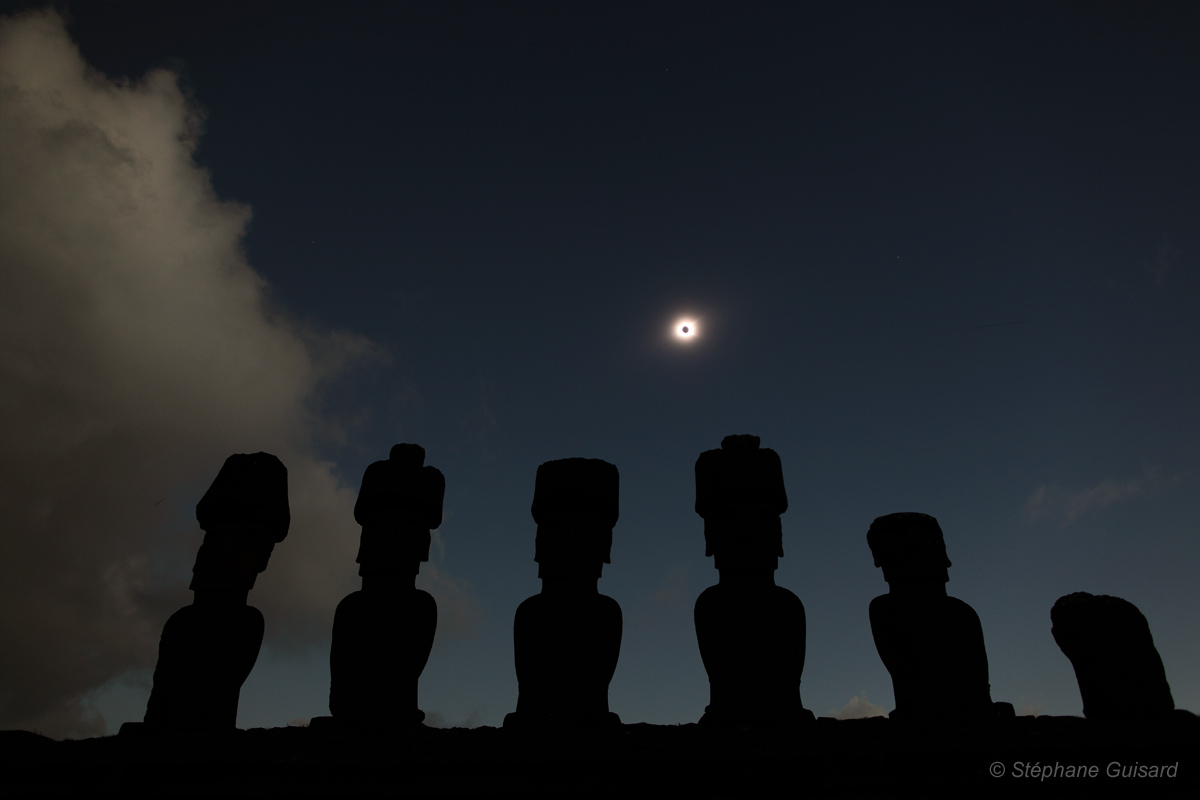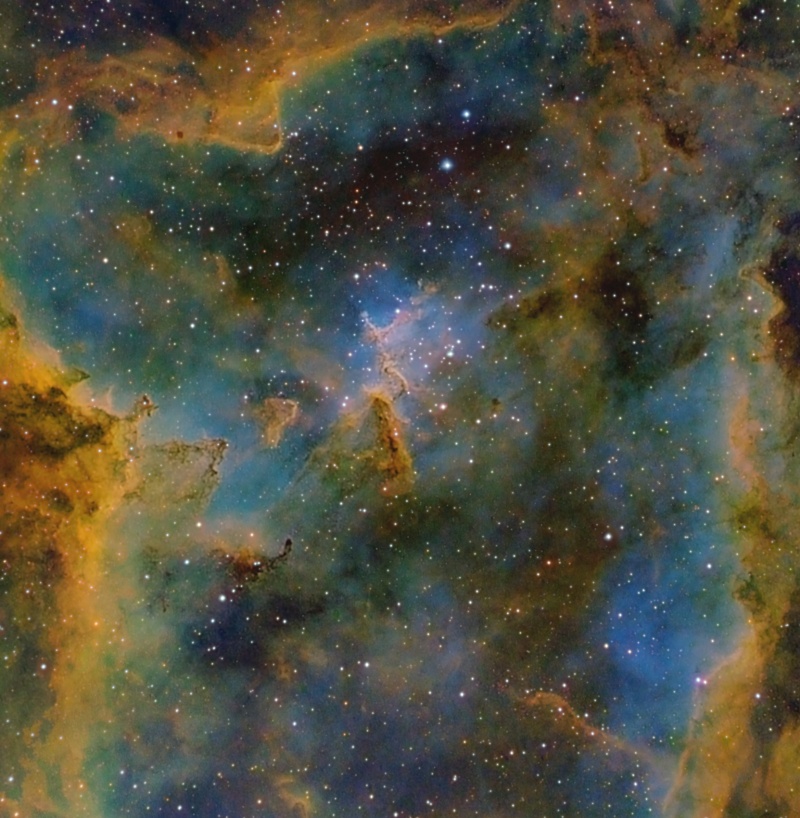Galilei, Galileo. Discoveries and Opinions of Galileo. New York, NY: Anchor, 1957. Print.
Dictionary of Science Biography. C. Gillispie, editor Charles Scribner's Sons. 1981.
Thursday, September 30, 2010
Tuesday, September 28, 2010
APOD 1.4
Well! Isn't this pretty! It's the Melotte 15 in the Heart, of course. Actually, Melotte 15 is a newborn star cluster, clocking in at 1.5 million years young. This photo depicts a very attractive skyscape composed of dust clouds and stellar winds combined with the radiation from the newborn stars. Hues of red, green, and blue correspond with the emissions of sulfer, hydrogen, and oxygen atoms. The Hubble Palette refers to the method of color enhancement that better reveals the detail of an image. Cool!
Friday, September 17, 2010
APOD 1.3

http://antwrp.gsfc.nasa.gov/apod/ap100917.html
It's no wonder that the Alaskan Inuits have a culture so full of enchantment and mystique. Imagine venturing out in the deep, dark night for salmon fishing, only to be greeted by a spectacle such as the Aurora Borealis! Spirits! Legends! They were the only ways to explain such magical phenomena. These days, however, we've made some strides and have determined that the auroras are visible as a result of the interaction of engergized particles and solar wind. Protons and electrons are energized in the magnetosphere, merely the space around the Earth. The Earth's magnetic field acts as an obstacle for the solar wind/charged particles and are forced to bend around it via the northernmost or southernmost points of Earth. The time around the equinox is prime time to see the Northern lights. During the summer, the night is not dark enough to see the auroras. I'm pretty darn excited to see the Arurora Borealis. I have so much to look forward to! From total solar eclipses to light shows in the sky to being able to point out constellations other than the Big Dipper...
APOD 1.2
Yikes! 1.2 is late. 1.3 tonight.This photo was the photo of the day on September ninth. I chose it for a shallow, superficial reason. Because it's real pretty. Well two reasons, when you scroll over it, annotations pop up, and who doesn't like annotations? The photo depicts star clusters and the cloudy remnants of stellar explosionslol. The cloud on the left is commonly known as "The Elephant's Trunk." I don't see an elephant's trunk, but there are a lot of things I don't see that astronomers do. I was very comforted in star lab yesterday when Mr. Percicval said that practice makes for a better astronomer, that recognizing patterns in the sky comes with experience, and that there is still hope for me to become the avid astronomer I so desperately want to become. Maybe people who name constellations or elephan'ts trunks just have better imaginations than I. But then again, it doesn't take much to assign a number series in the Sharpless or Barnard catalougues. Musing.
Tuesday, September 14, 2010
The Night Sky 9/14/10
Where? My driveway
When? 10:00-10:30
Finally a night that was clear enough to see anything! I hadn't realized how frustrating it is to have to depend on the cooperation of the clouds. I saw the Summer Triangle, which was directly overhead as promised. That was cute. With binoculars, I believe I saw some of the constellation Cygnus near Deneb. The moon is nearing first quarter, research says that tomorrow is the day. With binoculars, I could see a faint Antares right below the moon. The brightness of the moon sort of interfered with seeing the rest of Scorpius. Was that Jupiter hanging out in the East? I think it was. Good stuff. I would have stayed out longer, but the mosquitos told me I must go inside. I want to drive somewhere with even less light pollution. East of 75 is already better than my peers who live in Sarasota, but if I could get out to Myakka this weekend... Wouldn't that be nice.
When? 10:00-10:30
Finally a night that was clear enough to see anything! I hadn't realized how frustrating it is to have to depend on the cooperation of the clouds. I saw the Summer Triangle, which was directly overhead as promised. That was cute. With binoculars, I believe I saw some of the constellation Cygnus near Deneb. The moon is nearing first quarter, research says that tomorrow is the day. With binoculars, I could see a faint Antares right below the moon. The brightness of the moon sort of interfered with seeing the rest of Scorpius. Was that Jupiter hanging out in the East? I think it was. Good stuff. I would have stayed out longer, but the mosquitos told me I must go inside. I want to drive somewhere with even less light pollution. East of 75 is already better than my peers who live in Sarasota, but if I could get out to Myakka this weekend... Wouldn't that be nice.
Monday, September 6, 2010
APOD 1.1

This photo was the Astronomy Picture of the Day on July 14th 2010. It depicts the total solar eclipse that occured on July 11th, as seen from the Isla de Pascua (Easter Island) in the Pacific Ocean. Every day I go to astronomy class I am inspired, but particularly so the day we discussed solar eclipses. Mr. Percival showed us a two minute clip of a solar eclipse witnessed in Hungary and I became so fascinated with the idea that the day could go dark and back in a matter of moments. Needless to say I look forward to making the drive to South Carolina on August 21, 2017 to see it firsthand.
There are upwards of 800 of these mysterious statues on Easter Island and they appear to have been there for over five hundred year and depict the leaders of a lost civilization. I was drawn to this picture because it shows two of the world's greatest mysteries in the same frame- a solar eclipse and the Chilean statues of Moai. The image shows the beauty of the solar corona, which I find to be absolutely fascinating. I had no idea that the Sun's atmosphere could be so enchanting. The link that one follows when they click "solar corona" is just wonderful. Only 2,536 days until my first solar eclipse!
Subscribe to:
Posts (Atom)

